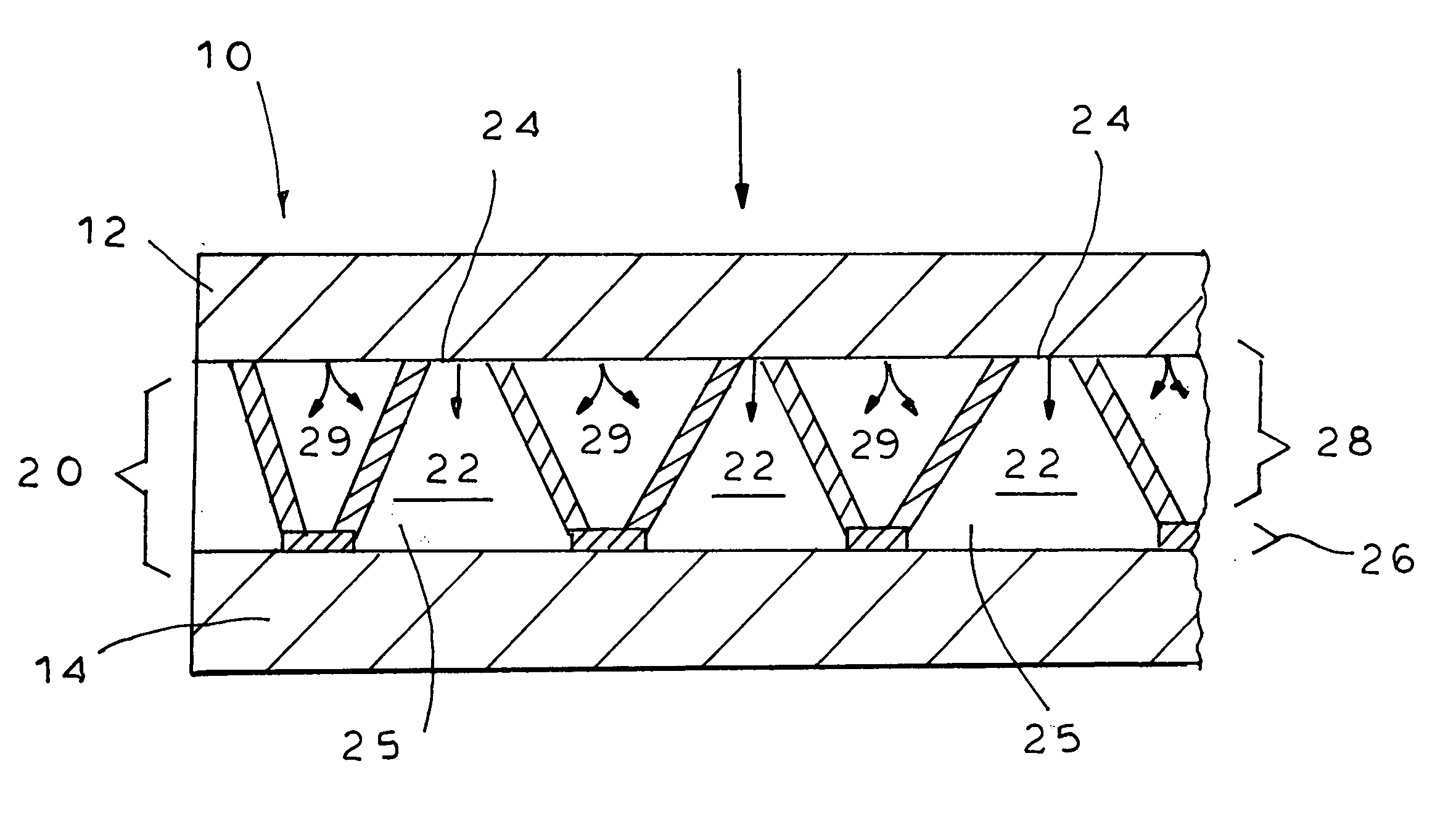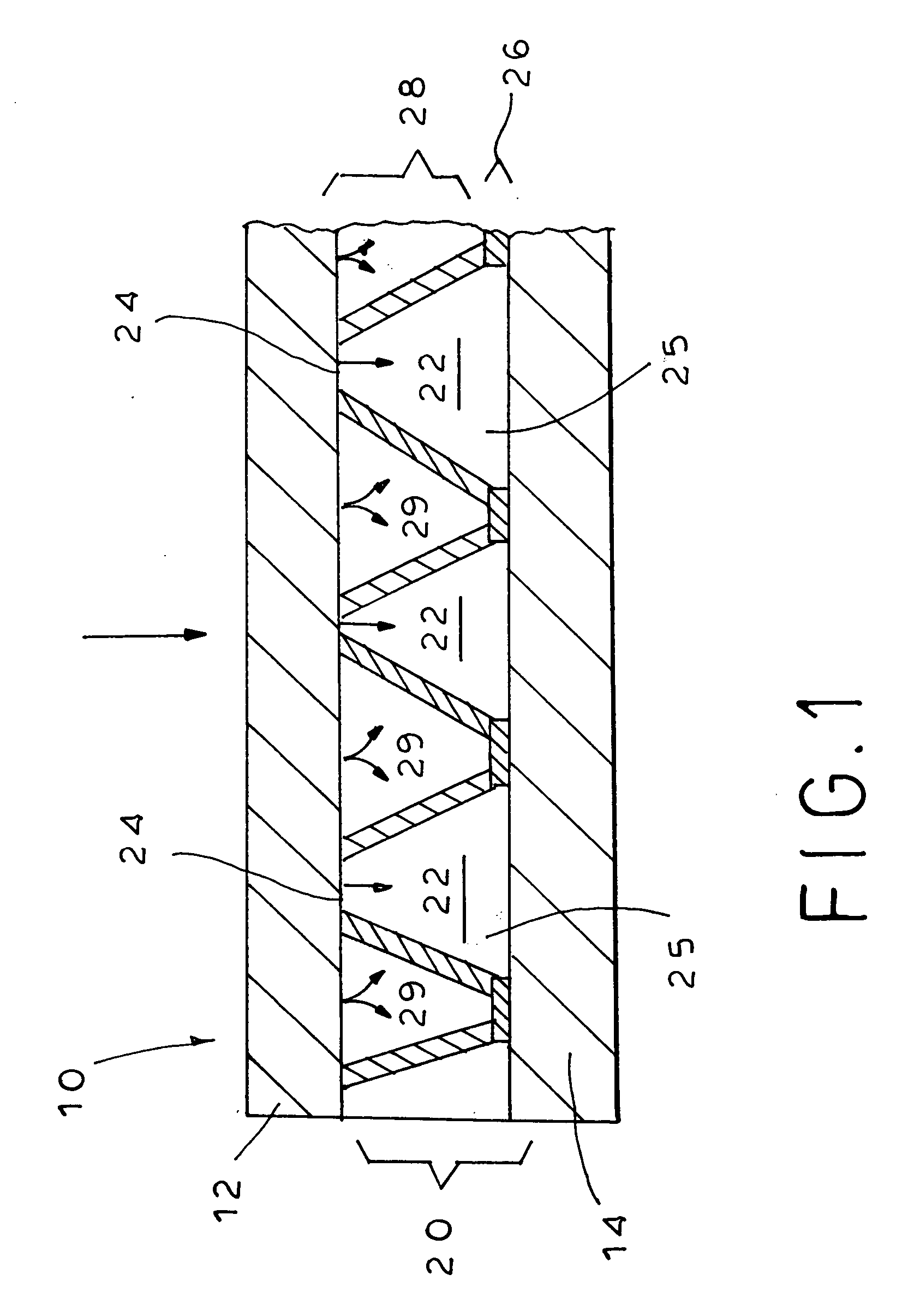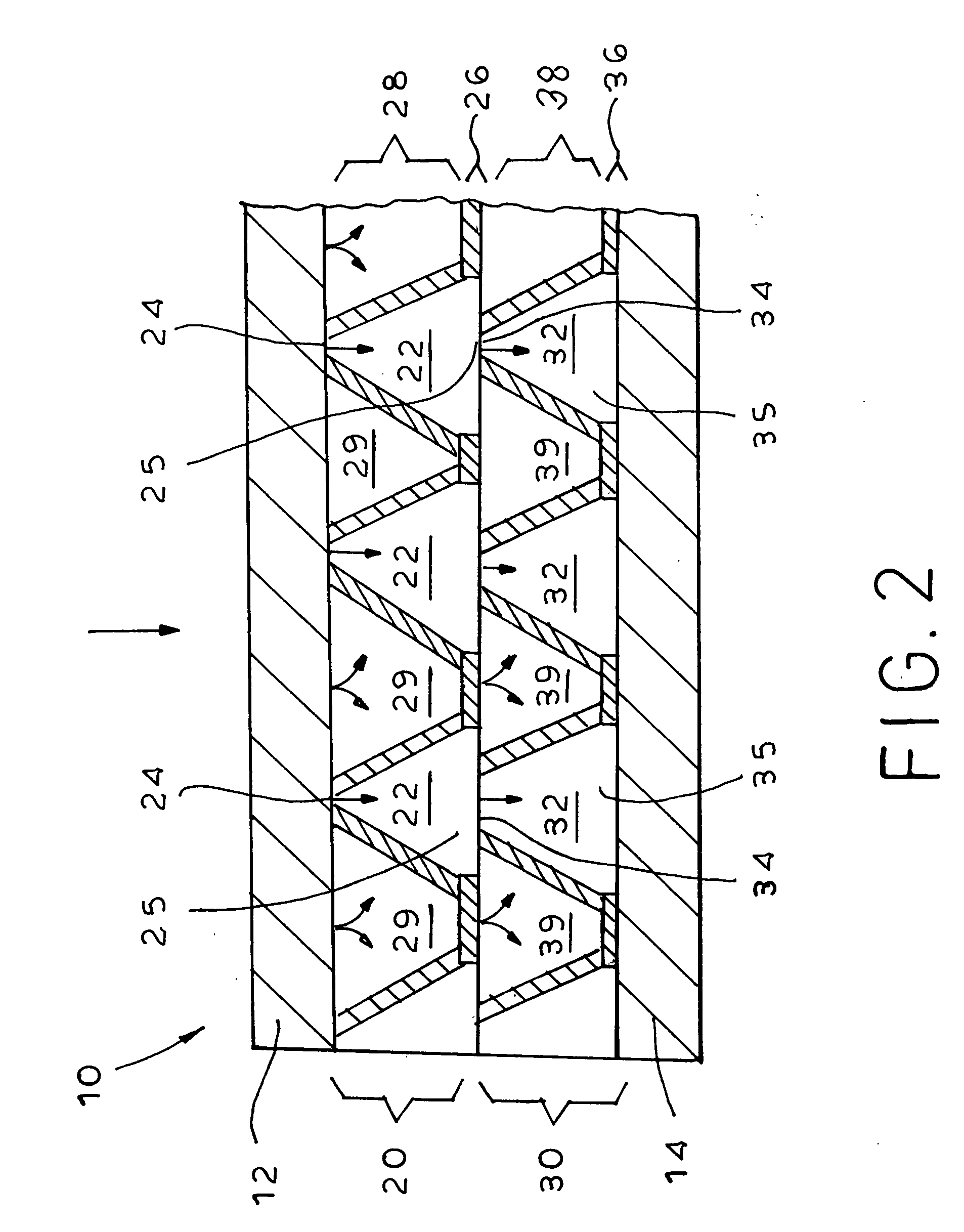Acquisition/distribution layer
a technology of acquisition/distribution layer and absorbent material, which is applied in the field of new acquisition/distribution layer there, can solve the problems of less capable of handling subsequent liquid insults, less prone to leakage of structures, and less prone to absorbent properties of diapers
- Summary
- Abstract
- Description
- Claims
- Application Information
AI Technical Summary
Benefits of technology
Problems solved by technology
Method used
Image
Examples
example 1
[0054] Absorbent structures were prepared comprising in sequence:
[0055] (i) a 13.gsm liquid-permeable nonwoven topsheet of polypropylene spunbond nonwoven (0.150 mm thick) available under the trade name SB1350021 from First Quality Nonwovens,
[0056] (ii) an ADL (see below for details),
[0057] (iii) a 300 gsm thin absorbent core of cellulose fluff and SAP (about 50:50 ratio), laminated with tissue on the back, available under the trade name NOVATHIN from Rayonier, Inc., and
[0058] (iv) a liquid-impermeable film backsheet of polyethylene (1.1 mm thick) available under the trade name DH-203 from Clopay Plastic Products.
[0059] The absorbent core and topsheet were cut to 21″ long and 4.25″ wide. The ADL was cut to 21″ long and 3.25″ wide.
[0060] The ADL was selected from a group consisting of:
[0061] AD: a 3D (50 mil thick) apertured polyethylene film of 36 gsm with conical pores, available under the trade name AQUIDRY from Tredegar Film Products,
[0062] DW: a 3D (about 14 mil thick) a...
example 2
[0072] Absorbent undergarment products were produced on a diaper machine and comprised
[0073] (i) a 13.5 gsm nonwoven topsheet (as in Example 1);
[0074] (ii) an ADL consisting of a 3D (50 mil thick) apertured polyethylene film of 36 gsm with conical pores, available under the trade name AQUIDRY from Tredegar Film Products (as in Example 1),
[0075] (iii) a 550 gsm absorbent core containing fluff pulp and SAP, and
[0076] (iv) an impermeable film backsheet (as in Example 1).
[0077] The ADL was included in the undergarments in either the CSU or CSD orientations. The undergarments containing the ADL in the CSD orientation were the large protective underwear product available under the trade name PV-513 from First Quality Products, and the other undergarments were similar except for the CSU orientation of the ADL.
[0078] Volunteers wore the undergarments overnight. Five of the 10 volunteers (2 male and 8 female) were unable to distinguish any comfort difference between the products.
[0079...
PUM
 Login to View More
Login to View More Abstract
Description
Claims
Application Information
 Login to View More
Login to View More - R&D
- Intellectual Property
- Life Sciences
- Materials
- Tech Scout
- Unparalleled Data Quality
- Higher Quality Content
- 60% Fewer Hallucinations
Browse by: Latest US Patents, China's latest patents, Technical Efficacy Thesaurus, Application Domain, Technology Topic, Popular Technical Reports.
© 2025 PatSnap. All rights reserved.Legal|Privacy policy|Modern Slavery Act Transparency Statement|Sitemap|About US| Contact US: help@patsnap.com



